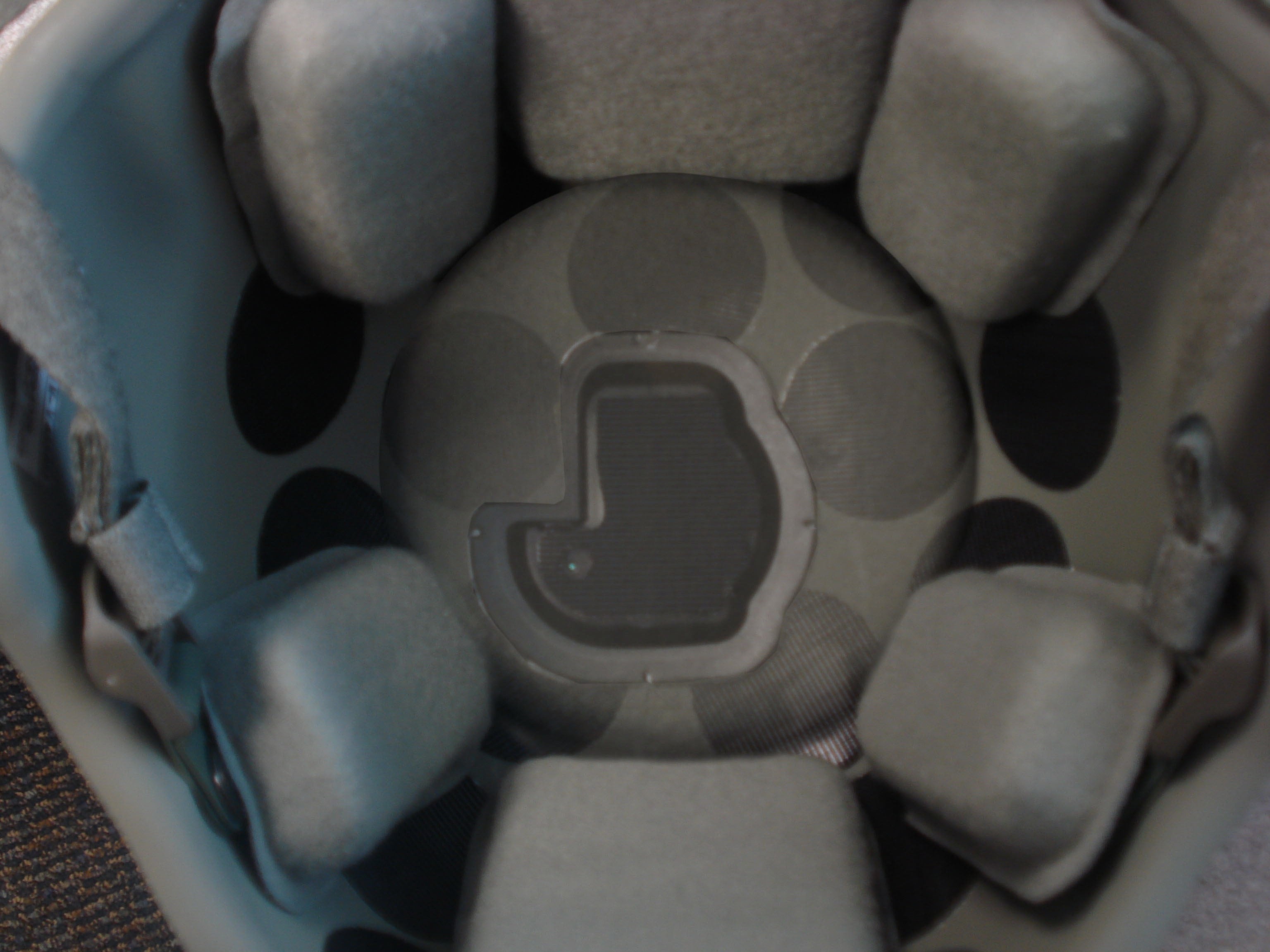WASHINGTON (Army News Service, June 3, 2008) - About 7,000 Soldiers from the 101st Airborne and 4th Infantry Divisions deployed to Iraq and Afghanistan are wearing helmet sensors to help Program Executive Office-Soldier improve upon the safety features of the advanced combat helmet.
The external sensor model mounted on the back of the ACH and the internal sensor mounted inside at the crown each have USB ports that allows PEO-Soldier to later download information for safety improvements.
"The sensors measure, store and record acceleration as well as over-pressure that a Soldier experiences in a blast event," said Lt. Col. Robert Myles, product manager for Soldiers Survivability. "During phase one, the most important thing the sensors do is provide us with data that will help us improve our Soldier protection equipment, such as the chin strap and pad and suspension system."
Myles said both type sensors have been working well and as expected. Data is presently be analyzed. At this point, the data study will not determine if a Soldier has experienced traumatic brain injury. "That is something that will be phase two as we continue to work with the medical community to determine exactly what data we need to collect specifically to reduce risk of TBI to our Soldiers," he said.
<b>Improved Outer Tactical Vest</b>
The latest in Interceptor Body Armor, the Improved Outer Tactical Vest or IOTV is also being fielded rapidly to Soldiers in Afghanistan and Iraq on a one-for-one exchange. All Soldiers in theater will have the new version by the end of June, officials said.
"Feedback from Soldiers who already have it love the new vest for the comfort, feel and mobility of the system," according to Maj. Hurley Shield, assistant product manager for body armor. "Soldiers love this vest compared to the old system. They like the comfort, the feel of it, the mobility of it, being able to move around in the system.
One of the major improvements is the quick-release system that allows a Soldier in an emergency situation, such as an overturned vehicle, to free himself from the body armor and get away from whatever the situation.
Side protection plates now wrap around and are integral to the system instead of being attached as on the older version yet the vest's weight has been reduced from 34 to 30 pounds. It also features a new yoke and collar design and accepts the current deltoid and groin protectors.
"There are 11 sizes in this system versus the old which had only eight sizes," said Shield. "So now we have a more customized vest for a Soldier with a longer torso and additional sizes in medium long, large long and extra large long."




Social Sharing